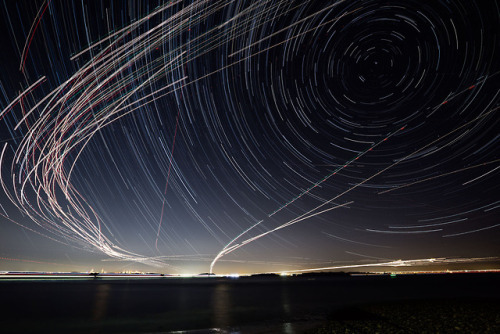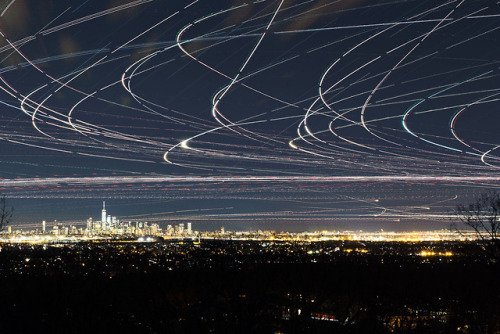Chris Howard's Blog, page 51
January 2, 2019
IC 2177, the Seagull Nebula - Another one from last night (New...

IC 2177, the Seagull Nebula - Another one from last night (New Years Day). After shooting the Flaming Heart Nebula for several hours, I dropped down to IC 2177 for the remaining clear skies (up to around 1am). Neither of these targets are strong–or have anything showing up–in the oxygen bandpass. I ended up cutting the OIII frames and going with bi-color Ha and SII. https://SaltwaterWitch.com
Some shots of my scope and cameras last night, under a clear...
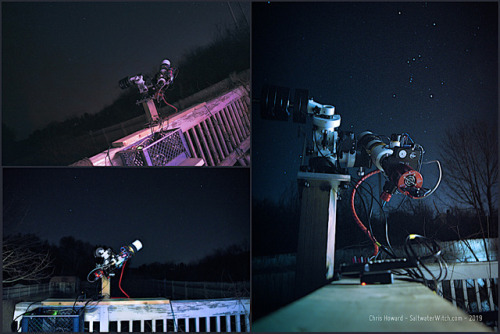
Some shots of my scope and cameras last night, under a clear winter night sky, a very cold night sky. I took these during the narrowband imaging run of IC 2177, the “Seagull Nebula”. https://SaltwaterWitch.com
Flaming Star Nebula: the star at the core of this nebula is the...

Flaming Star Nebula: the star at the core of this nebula is the “Flaming Star”, AE Aurigae, in the constellation Auriga (The Charioteer), and all the surrounding dust and clouds of hydrogen is called the Flaming Star Nebula (IC 405). This emission nebula is around 1500 lightyears away and it’s fairly large, about 5 lightyears across (roughly 47 trillion kilometers or 30 trillion miles across).
What’s interesting is that even though AE Auriga is lighting up the nebula, it was not formed there, but rather is a “runaway star” that was probably ejected several million years ago from star formation furnace in the core of the Orion Nebula. The star is moving quickly through the nebula producing “a violent bow shock and high energy electromagnetic radiation”.
Frames: 23 x 300 seconds of Ha, 5 x 300 seconds of OIII (I was not picking up oxygen at all!), and 20 x 360 seconds of SII. Equipment: William Optics GT81 APO refractor, ZWO ASI1600MM-Pro monochrome camera (unity gain 139/21), Astronomik filters, iOptron CEM25P mount, INDI/Ekos/KStars running in Stellarmate/Raspberry Pi 3b+. https://SaltwaterWitch.com
January 1, 2019
Out tonight with the astro gear on the first day of 2019....
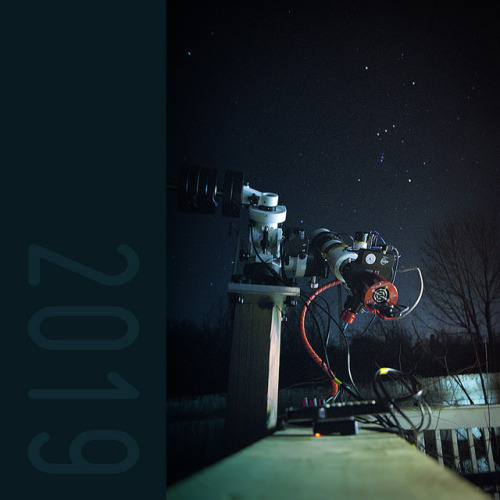
Out tonight with the astro gear on the first day of 2019. There’s Orion in the sky, but I’m shooting narrowband frames of the Seagull Nebula when I took this. https://SaltwaterWitch.com
December 31, 2018
Chris Howard - 2018 in Art Here are some highlights of of the...
Chris Howard - 2018 in Art
Here are some highlights of of the work I’ve painted over the last 12 months, including book covers, commission pieces, updates to older works, and more. Can you pick out the Discworld Character Studies? https://SaltwaterWitch.com
Astro-Imaging Highlights 2018 I put together a batch of images...
Astro-Imaging Highlights 2018
I put together a batch of images from my astrophotography sessions over the last year. This isn’t in order, because a wanted a nice mix of color, narrowband, hydrogen-alpha only, wide-field, moon shots, along with some of my astro gear setups for some of these sessions.
The New Horizons spacecraft is way out beyond the planetary...
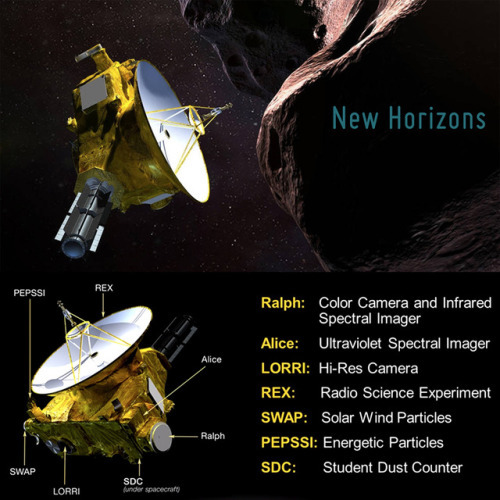
The New Horizons spacecraft is way out beyond the planetary orbits, moving at 14km/second, and will be making a flyby and data capture of the Kuiper Belt object 2014 MU69, otherwise known as “Ultima Thule”. New Horizons has a bunch of devices for data collection and analysis, and like most space probes they have cool acronyms. In the case of New Horizons I think it’s interesting that among REX and SWAP, there’s also “Ralph”, which is a color camera and infrared spectral imager, and an “Alice”, an ultraviolet spectral imager. Ultima Thule is about 45 AU out (45 x distance of the earth to the sun), with a 6 light-hour lag (data travelling at the speed of light will take 6 hours to reach ground stations on the earth), so even though the flyby will happen around 5am UTC on January 1st, it will take some time to gather it all and present it. I can’t wait!
December 29, 2018
skiribilla:^
NGC 1499, California Nebula in bi-color narrowband...
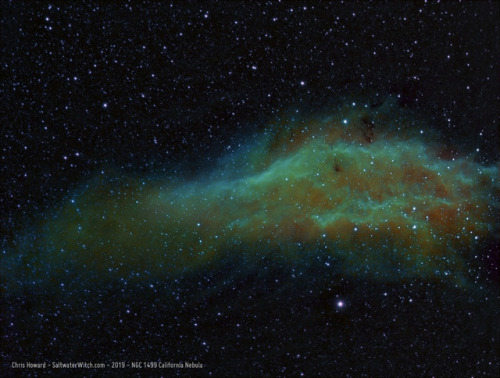
NGC 1499, California Nebula in bi-color narrowband hydrogen-alpha and sulfur 2. I captured this data on the 25th, but didn’t have time to capture oxygen 3 frames with high clouds moving in and the moon rising. Even so, I like the way this turned out with the two bandpasses, almost fluorescent. NGC 1499 is about 1000 lightyears away, and if you haven’t guessed, it’s called “California Nebula” because if you flip this image 90 degrees counterclockwise it looks like the state. William Optics ZS61 APO refractor and #ZWO ASI1600MM-Pro camera. https://SaltwaterWitch.com/blog


